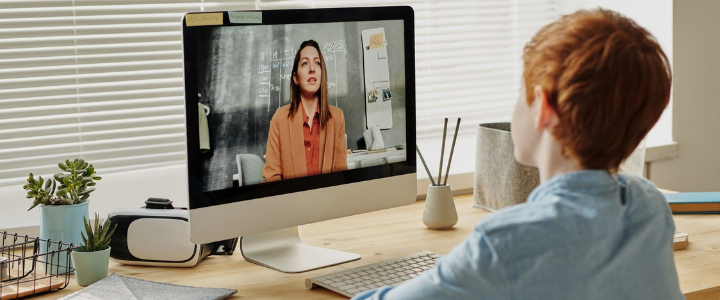Current circumstances have forced schools, universities, and other educational institutions to adapt to remote learning. UNESCO reports that 90% of the world’s student population have been affected by school closures in light of the global pandemic. Now, instead of gathering in-person and having classes face-to-face, educators and students have to adapt to a remote setup to continue their education.
While the transition to this unfamiliar approach is challenging for educators, it is all the more difficult for students. Many of them are used to learning within the four walls of a classroom, and having to switch to an entirely online environment may affect motivation and on-task behavior.
To ensure that your students remain engaged in your online classroom, here are some tips that you can try:
1. Provide a variety of assignments and tasks.
Your goal is for your students to gain a deeper understanding of the concepts you teach and for them to be able to synthesize new ideas and use what they have learned in other situations. Assigning mostly worksheets or reading questions is not always the best way to go. Doing so risks learners disengaging due to boredom or frustration because this method does not lead to understanding. Instead, you should offer different approaches to students that allow them to build and apply knowledge. Aside from providing readings, consider utilizing video content, visual presentations, group projects, or even podcasts to accommodate different learning styles.
2. Introduce engaging activities and courses.
Now’s the time to think outside of the box. You might want to brainstorm and introduce activities and courses that cater to the interests of your students, ideally ones that can utilize tools with which they are already familiar. Maryville University highlights how students should be an educator’s primary focus. Teachers must understand their students and design courses around their needs, concerns, and abilities. Today’s generation of learners are well versed in navigating the internet and various video platforms, so as an educator, you can take advantage of their propensity for technology to make learning more enjoyable. Facilitate collaborative work on tools like Edmodo, use Projeqt for interactive presentations, and Kahoot! for game-based learning. These are just a few examples of how you can engage your students with different activities that can be done remotely.
3. Create ways to keep tabs on progress.
If students aren’t aware of how they’re doing, it’s likely that they might not be engaging productively. You have to establish explicit goals for the course, and link all student activities and progress back to those goals. You can utilize online tools to help your students stay on top of their progress, so they always have an idea of where they stand. For instance, ClassDojo uses a feedback system for teachers to reward the hard work of their students. Even without a high-tech tool, you can find ways to give your students extra encouragement with words of praise. Host individual consultations, whether through video or e-mail, to update each student on their progress, provide constructive feedback on what else they need to be doing, or simply acknowledge their efforts.
4. Dispense information in small doses.
Data curated by Forbes reveals that student engagement plummets significantly when videos shown to them last longer than 9-12 minutes. To mitigate this, instead of having a 60-hour lecture, divide the hour into segments of no more than 15-20 minutes, especially if the subject matter is new or complex and if the students are younger. When you break up information and deliver them in shorter bursts, you can take advantage of what psychologists refer to as the “spacing effect,” which enhances learning.
5. Encourage students to get off their screens.
While it sounds counterintuitive to online learning, encouraging students to be mindful of their screen time is actually beneficial for their overall education. First of all, spending too much time in front of the computer can trigger a variety of physical health problems like eye strain, headaches, and chronic back pain. It encourages a sedentary lifestyle, too, and students need to incorporate physical activity into their routines early on. More importantly, excessive use of electronics, regardless of their educational purpose, increases the risk of psychological conditions such as anxiety and depression. All of these can negatively impact their willingness and ability to learn.
Therefore, having them stare at video lessons all day won’t do them any good. The role of the educator is to help students apply their learning outside of the classroom, whether it’s virtual or not. While some aspects of remote education can’t be eliminated, like online discussions, you can bring learning into the real world by assigning them activities that don’t require much screen time. Some ideas you can implement are journaling, sports, scientific experiments, interviews, and crafts. Of course, off-screen education will ultimately depend on the subject and its relevance to the curriculum. Regardless, you need to highlight the educational component of each activity. Then, have the students report back with what they have observed and learned from it.






